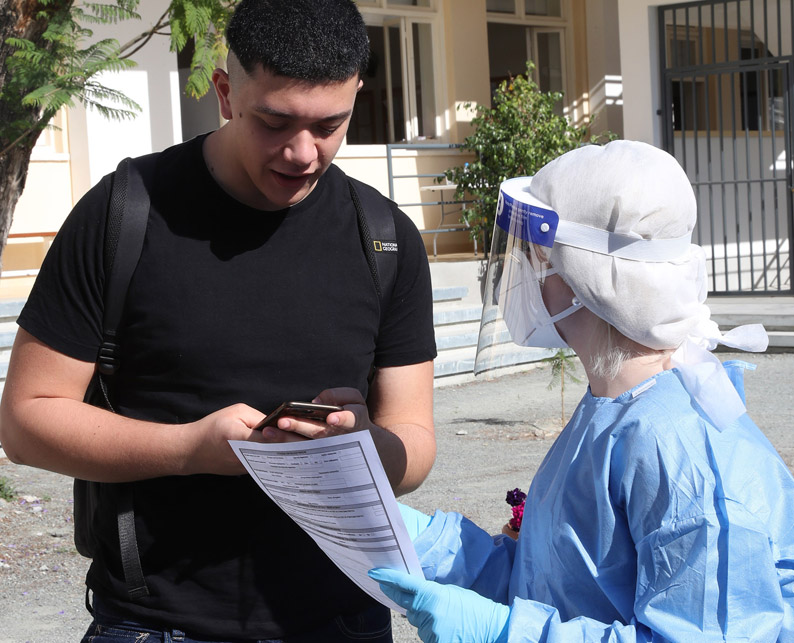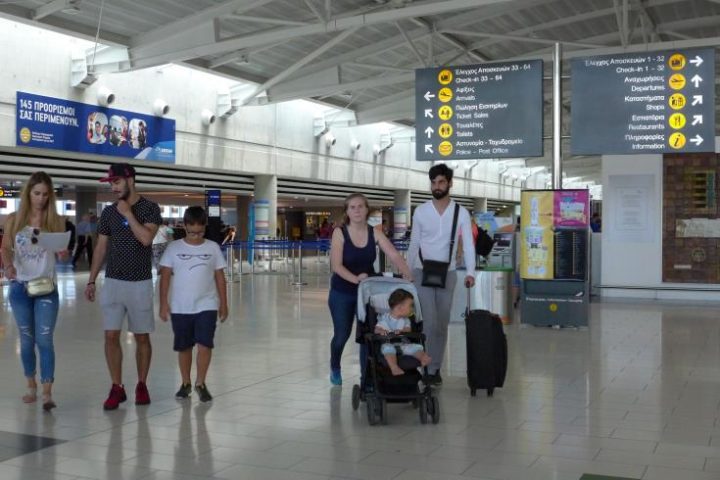The average age of new COVID-19 cases has fallen to 23 for the first time since start of the pandemic, as the recent spike in infections pushes Cyprus back into the high-risk ‘red’ category of the European Centre for Disease Prevention and Control (ECDC).
The mean age of new cases was 30 years according to the health ministry’s rolling report on June 15 and 31 years on June 1.
Releasing its latest epidemiological report on Friday, the Health Ministry said the new coronavirus wave is driven by the Delta variant, frequent amongst people under 40, who also have the lowest vaccination rates.
The “low vaccination coverage in the under 40s and the lack of compliance in the places where people of these ages socialise” are driving the rise in cases, according to the health ministry.
Following a surge in coronavirus cases that started in late June, the ministry said it detected 2,323 cases between June 16 and 29, pushing the island’s 14-day cumulative diagnosis rate to 261.6 per 100,000 inhabitants.
This places Cyprus in the ‘red’ category, with the health ministry warning this is approaching the ‘dark red’ zone.
In early June, Cyprus was on the edge of joining ECDC’s ‘green’ list, as the island’s 14-day notification rate had dropped to 92.1 per 100,000. To be classified as green, Cyprus must push cases to 75.
Countries placed in ‘red’ have a 14-day cumulative rate from 75 to 200 or the coronavirus test positivity rate is 4% or more, or if the 14-day cumulative diagnosis rate is more than 200 but less than 500.
Countries with a notification rate higher than 500 per 100,000 are placed in the ‘dark red’ category. On Thursday alone, Cyprus reported 473 cases, a figure not seen since early April.
By age groups, infants and children under 19 accounted for 36.9% of new cases, with a 14-day cumulative diagnosis rate at 445.8 per 100,000 population. The majority, or 58% of the cases, involved adults aged 20 to 59, with the diagnosis rate at 268.6 per 100,000 people, the report revealed.
“Cases involving people over 40 make up for just 10%,” said the ministry, adding that just 1.7% and 0.4% of cases involve people in the ages groups of 70 to 79 and above 80, respectively.
Authorities are trying to convince younger people to get vaccinated, as scientists fear that Cyprus will see daily COVID-19 cases reach new heights if they do not get vaccinated soon.
Numbers will increase
In comments to the Cyprus News Agency on Thursday, virologist Dr Peter Karayiannis said the jump in cases could only mean the numbers will increase in the coming days, as the outbreak is building momentum.
“I believe there are many young people who may not have gone for a test, even though they know they were in close contact with a known case and may even have symptoms,” Karayiannis said.
Among all cases diagnosed in the last 14 days, 759 (32.7%) were reported in Nicosia, 614 (26.4%) in Limassol, 460 (19.8%) in Famagusta, 305 (13.1%) in Larnaca and 107 (4.6%) in Paphos. A further 78 (3.4%) were reported either in the British bases or had a residence abroad, or information was not available.
Just 9% or 209 of the 2,323 cases concerned people who arrived from abroad.
All districts, apart from Paphos, have reported a 14-day notification rate of over 200. Famagusta takes the lead with a shocking 940.7, seven-fold compared to 139.1 per 100,000 inhabitants in the previous report.
Limassol is second with 247.3 rising from 166.7, followed by Nicosia with 219.1 from 63.5, and Larnaca with 204.7 from 99.3. Paphos had a notification rate of 112.2, up from 53.5.
Meanwhile, 62 patients had been hospitalised on June 30, eight of whom were in an ICU. The median age of hospitalised patients was 56 years of age.
Encouragingly, no deaths were reported over the 14-day period examined in the report. The median age of people who lost their lives due to COVID-19 is 77.
The ministry’s report said the 2,323 cases were detected from 90,104 PCR and 431,326 antigen rapid tests.










